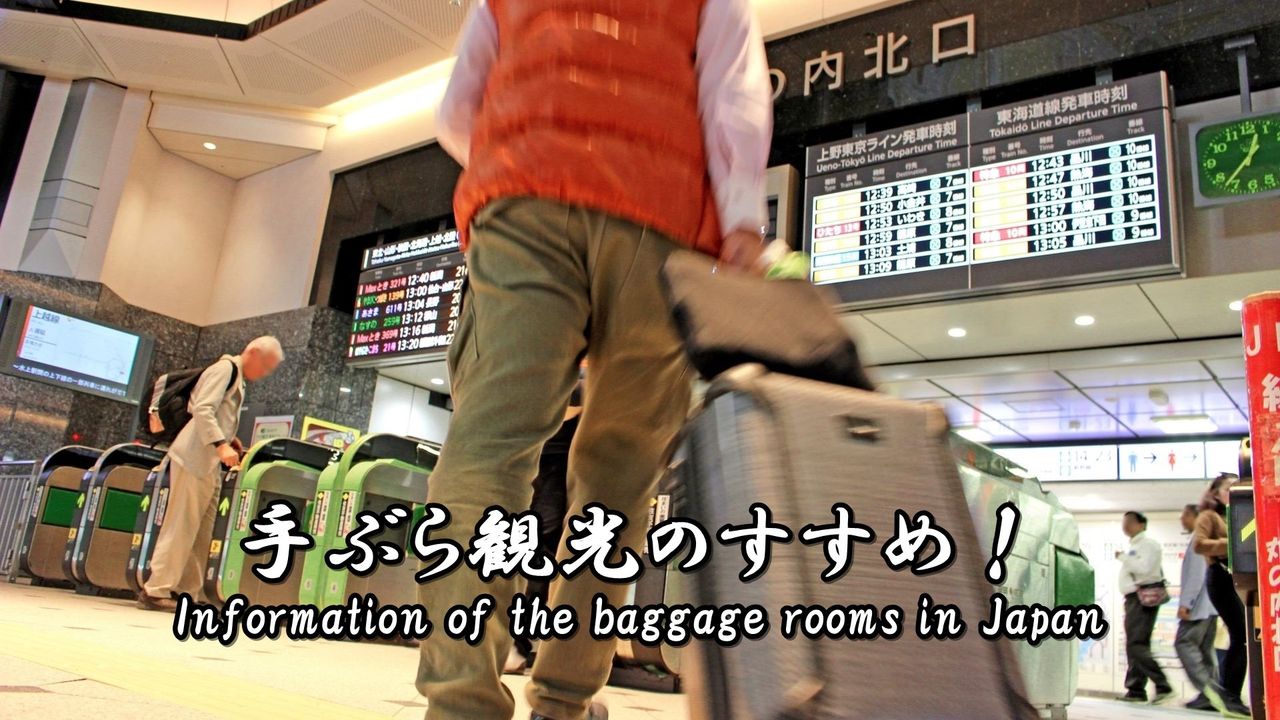Chishaku-in temple is the head temple of the Chisan School of the Shingon sect of Buddhism and about 3000 temples belong to Chisan School in Japan.
Chishaku-in Temple was originally a sub-temple (a temple that stands within the grounds of another temple) of Negorosan Daidenpo-in Temple(根来山大伝法院) in Wakayama.
(Therefore Chishaku-in temple is also called “Negoro-ji temple(根来寺)”.)
But Negorosan Daidenpo-in Temple became opposed to Hideyoshi TOYOTOMI(豊臣秀吉) and was completely destroyed by fire in the siege of Negoro(根来攻め) in 1585.
Afterwards, this temple was revived in the times of Ieyasu Tokugawa(徳川 家康).
The highlight of this temple is “Panel painting of a national treasure” and “Japanese garden of a national place of scenic beauty“.
Especially, The garden in front of the 大書院(large study hall) of Chishaku-in temple has been designated as a national place of scenic beauty of which SEN no Rikyu is said to have been particularly fond.
The tourist of the group does not so much visit to this temple and garden.
Therefore we can see the sights slowly.
*There is the “Sanjusangen-do Temple” which is famous for 1,000 Kannon-with-One-Thousand-Arms statues near of this temple.
Contents:
- About Chishaku-in Temple
- Japanese garden of a national place of scenic beauty
- Would you like to experience the staying in the Dorter?
- Goshuin(The stamp of shrine or temple) of Chishaku-in Temple
- How to get to Chishaku-in Temple
1.About Chishaku-in Temple
Chishaku-in (智積院) is a Buddhist temple in Higashiyama-ku, Kyoto, Japan. It is affiliated with Shingon-shū Chizan-ha Buddhism.
The temple has a historic garden that was said to be a favourite of Sen no Rikyū.[1]
The Nihonga artist Inshō Dōmoto received a commission from the monastery to paint new sliding doors facing the famous garden. “Ladies at Tea” from 1958 shows a more western-style painting of two women enjoying tea. The left side is a woman in kimono, while the lady to the right is in western dress. The four sliding doors were a departure from the traditional style.[2][3]
引用(citation):https://en.wikipedia.org/wiki/Chishaku-in
Open:9:00~16:00
Admission Fee:500 yen(Adults),300 yen(Junior high school / high school student),200 yen(Elementary school student)
Adress:964, Higashikawaracho, Higashiyama-ku Kyoto-shi, Kyoto, 605-0951, Japan
Phone Number:+81-075-541-5361
Chishaku-in temple is the head temple of the Chisan School of the Shingon sect of Buddhism.

The tourist of the group does not so much visit to this temple and garden.
Therefore we can see the sights slowly. d(*゚ー゚*)

The pair of stone guardian dogs of this temple has a very pretty shape. (○´艸`)


Let’s pass through the gate of the entrance, and enter the precincts.

The precincts of this temple seem to be totally the circuit style garden.

A building in the depths of the approach is the Kon-do Hall(金堂).
This building is a comparatively new building which was rebuilt in 1975.
The Dainichi Buddha who is a principal idol of this temple is enshrined in this building.

The crest of the bellflower which is the crest of this temple is raised.
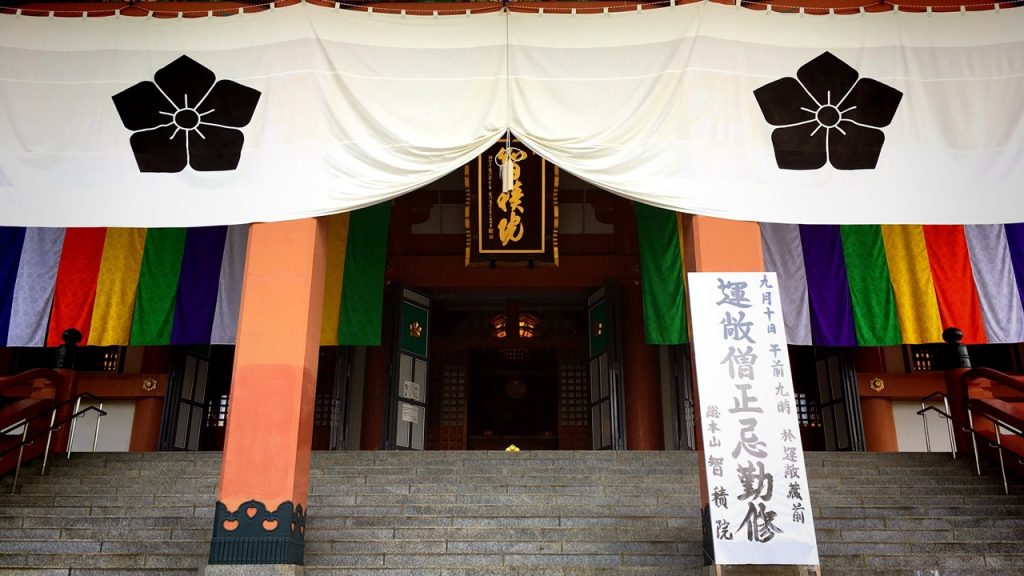
The current building was built for a business to memorialize birth 1200 of Kobo-Daishi Kukai which was Ambassador propagating Buddhism.

The colorful cloth which is attached to the building is called “Goshikimaku(五色幕)”.

“Goshikimaku(五色幕)” is five colors of curtains which is attached to the walls of the temple of the Buddhism.
The building where “Goshikimaku(五色幕)” is attached expresses that it is a temple of the Buddhism.

This is the Myoo-den Hall(明王殿).
The Fudo Myoo (Acala, one of the Five Wisdom Kings) who is a principal idol of this temple is enshrined in this building.

This building was the main hall of the temple called “Daiun-in Temple(大雲院)” in old days.

This is the Taishi-do Hall(大師堂) that is in the inner part of the precincts.
This building was built in 1789.

The Kobo-Daishi Kukai which is the initiator of the Shingon Buddhism is enshrined in this building.

This is a bell tower.
This building is the new building which was built in 1998.

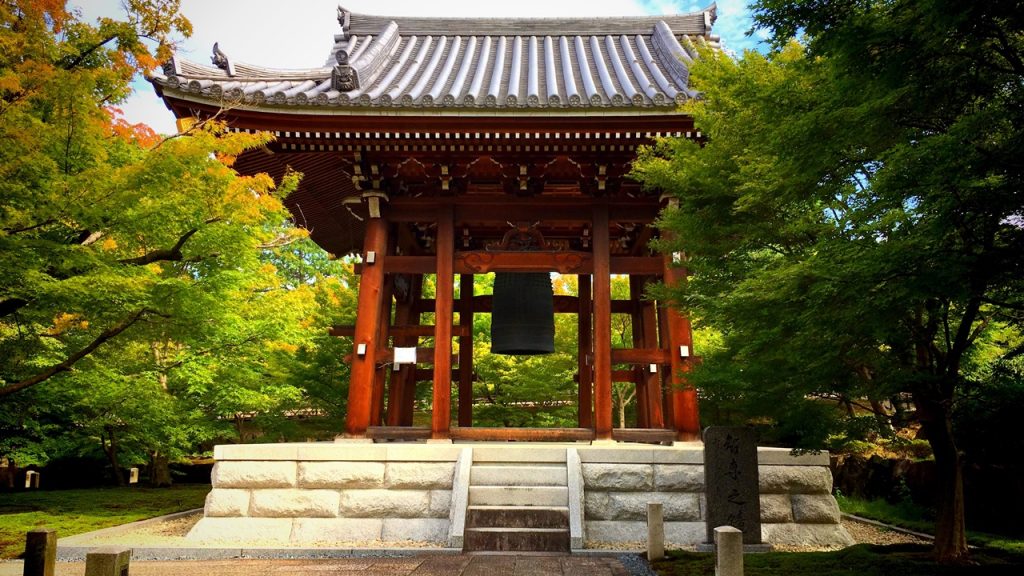
This is the Kannon of the Buddhist service for miscarried children.

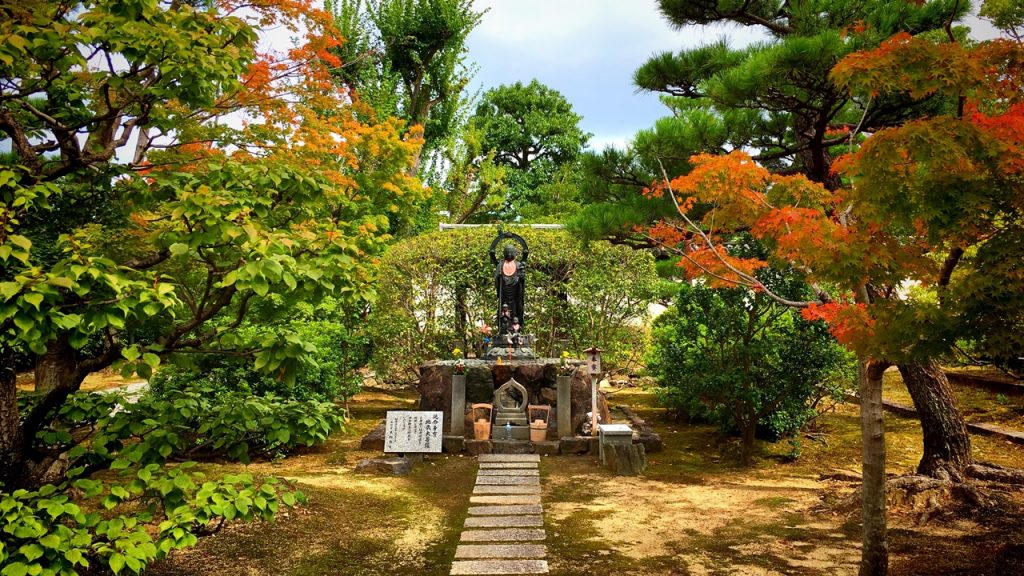
This is the statue of Genko Nanka (南化玄興).
He is the initiator of the temple called Shoun-ji Temple(祥雲寺).
(Shoun-ji Temple(祥雲寺) is the temple which became the ancestors of this temple.)

2.Japanese garden of a national place of scenic beauty
The Ko-do Hall(講堂) and a Japanese garden of a national place of scenic beauty are pay areas.
Admission fee is 500 yen (adults).
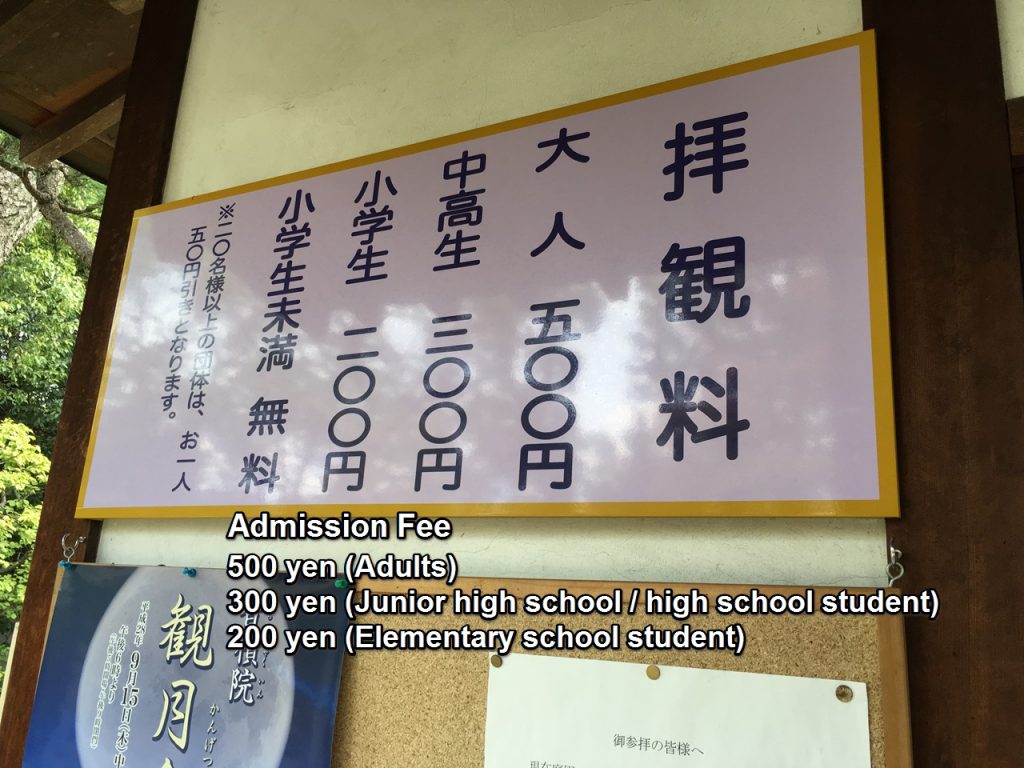
This is a garden entrance.
Let’s visit it without forgetting because there is the storehouse of the national treasure just before this entrance.

This is the storehouse of the national treasure.
The panel painting of national treasure which was drawn by Tohaku Hasegawa school is kept in this building .
Photography and video recording are prohibited in this building.

This is the Ko-do Hall(講堂).
The current building was rebuilt in 1995.

A modern fusuma picture which was drawn by Toshio Tabuchi is displayed in this building.
Photography and video recording are prohibited in the room of this building.


There are a Oshoin(大書院) and a garden in the back of the Ko-do Hall(講堂).

■Youtube:”SEN no Rikyu’s favorite garden” in Chishaku-in Temple
The garden in front of the Oshoin(大書院) of Chishaku-in temple has been designated a national place of scenic beauty of which SEN no Rikyu is said to have been particularly fond.

This garden is said to have been made by Enshu KOBORI who is the famous architect of the Edo era.

The tourist of the group does not so much visit to this garden.
It is a well-kept secret spot! d(*゚ー゚*)

The mountain of this gardens is made in the image of Chinese Lushan, and the pond is made in the image of Chang Jiang.

There is the replica of the Shoheki-ga using gold-foil-pressed paper drawn by Tohaku Hasegawa in the Oshoin(大書院).
(The genuine Shoheki-ga is housed within the storehouse.)



This is a dry landscape Japanese garden of the courtyards.

Many fusuma pictures and Shoheki-ga are also displayed in the inner part of the Oshoin(大書院).



This is a roofed passage connecting buildings spreading out from the Oshoin(大書院) to the Ko-do Hall(講堂).

In the autumn, the autumn leaves are beautiful. d(*゚ー゚*)

3.Would you like to experience the staying in the Dorter?
It is inactive now.
Scheduled to be renewed in the spring of 2020.
Chishaku-in Temple has a dorter which is called 智積院会館(Chishaku-in Kaikan), and a general person can stay there.
In Chishaku-in temple, morning religious service is held by priests every morning(AM6:00 ~).
And, the guest can participate in this morning religious service.
Gomadaki (the Buddhist rite of burning wood sticks) and Sutra-chanting are held in this morning religious service.
There are two types of the room.
The room reservation is possible from a homepage or a telephone(+81-75-541-5363).
■Youtube:智積院 朝のお勤め(Morning religious service by the priests at Myoo-den(明王殿).)
■智積院会館(Chishaku-in Kaikan)*Japanese text only
Check-in time:15:00~21:00
Check-out time:10:00
Restroom and bath:Shared
Amenity:Yukata, face towel, toothbrush set, conditioner in shampoo, body soap
■Hotel plan
| Adults (Junior high school students or older) |
6,670 yen | with breakfast included |
|---|---|---|
| Children(four years or older) | 5,150 yen | with breakfast included |
The room is not so different from a common inn. (○´艸`)
引用(citation):http://www.chisan.or.jp/sanpai/kaikan/shukuhaku/
4.Goshuin(The stamp of shrine or temple) of Chishaku-in Temple
The word which can read as “大日如来(Dainichi Nyorai)” is written to Goshuin with a sumi.
大日如来(Dainichi Nyorai) is a principal idol of this temple.

5.How to get to Chishaku-in Temple
The nearest station of Chishaku-in Temple is “Keihan Shichijo Station”.
It is about 10-minutes walk from the station.
■Keihan Shichijo Station→Chishaku-in Temple

How did you like it?
Please try to go.
Have a nice trip! XD
<Let’s search the sightseeing information of Kansai in Japan on ‘Japan’s Travel Manual‘!!>
<This site introduces the easiest way to get Japanese (Kansai) sightseeing spots to you.>












